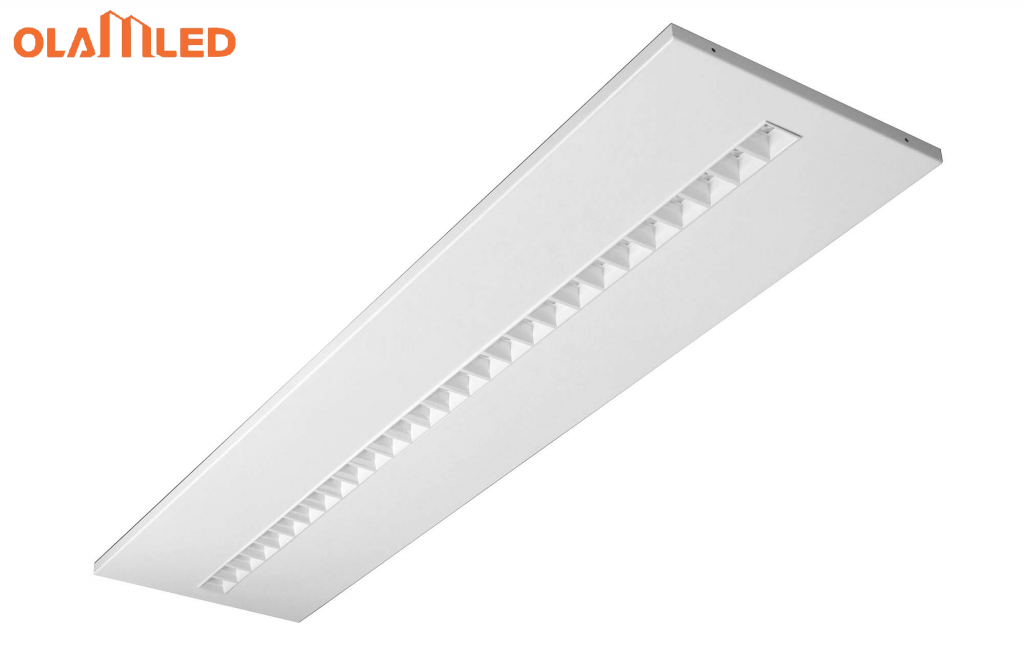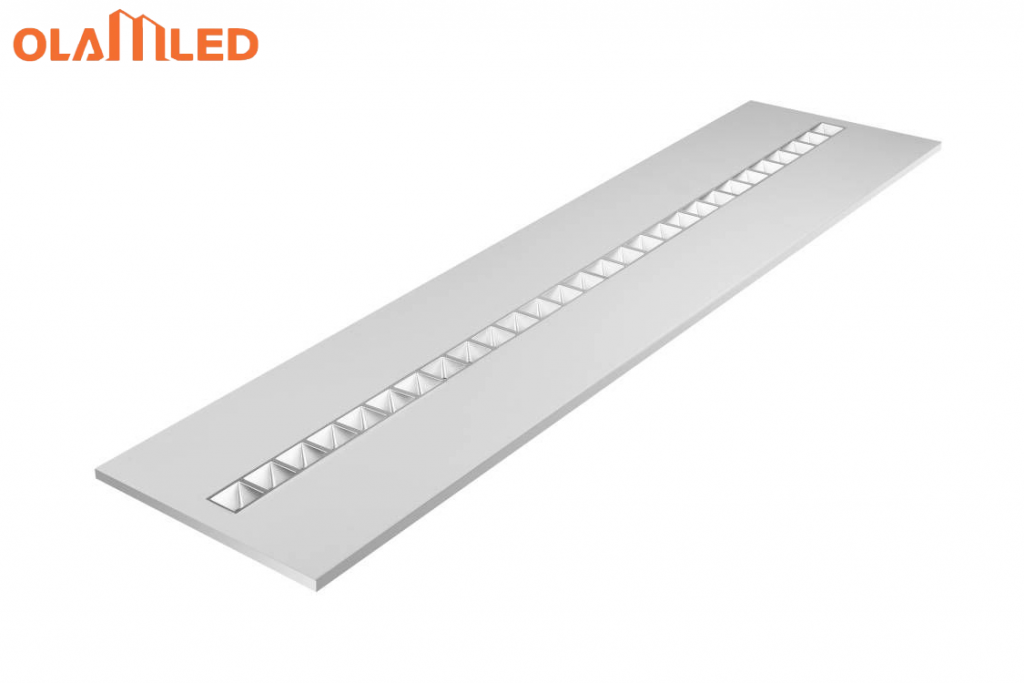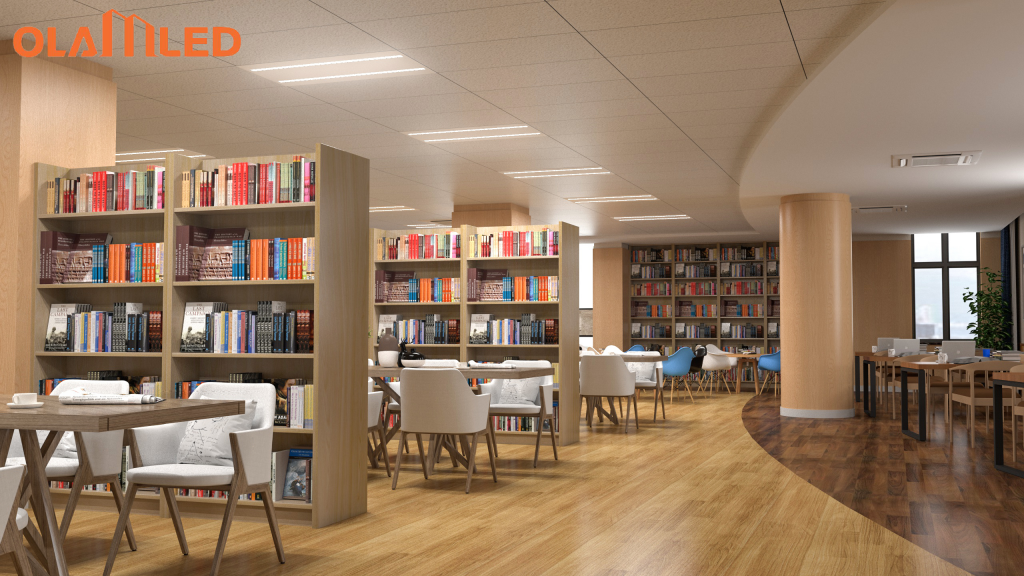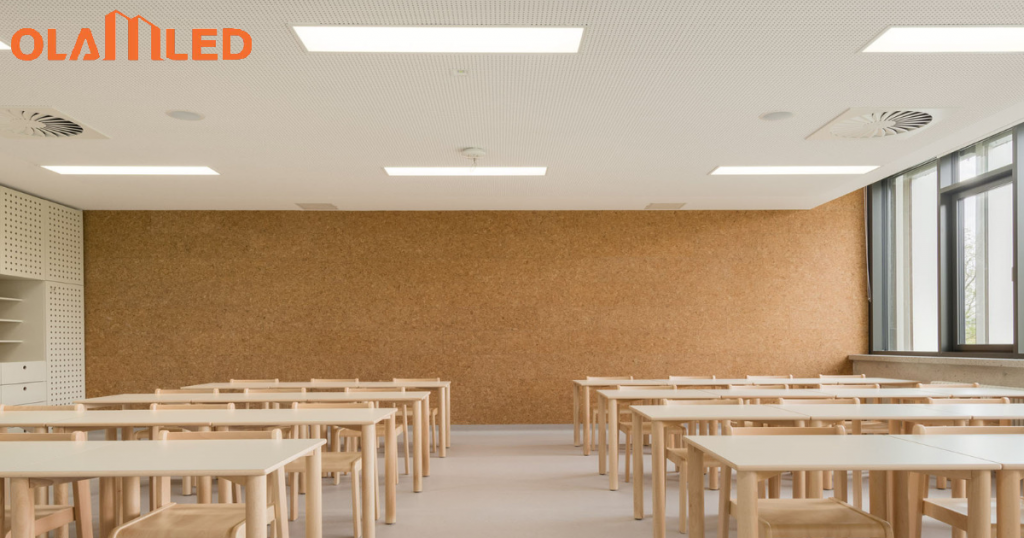What Are the Benefits of Anti‑Glare LED Panel Lights?
Anti‑glare LED panel lights offer multiple advantages in classrooms. They diffuse light evenly to cut down on distracting reflections and reduce interruptions during lessons. In one pilot at Lincoln Middle School, teachers reported 30 % fewer student complaints about glare within two weeks of installation. Such improvements support better concentration and uninterrupted learning.
Key benefits include:
- Reduced eye strain: Anti‑glare coatings and softer light lower fatigue, leading to better student focus.
- Improved color comfort: Warmer tones (3000 K–3500 K) ease visual tasks, while cooler tones (5000 K–6500 K) can support alertness when needed.
- Energy efficiency: LEDs use up to 50% less power than fluorescents, cutting utility costs and modeling sustainability for students.
- Long lifespan: With 25 000 – 50 000 hours of operation, these panels need fewer replacements, freeing budget for other resources.
Consistent illumination and ergonomic design foster a calm environment. At Jefferson High, switched LED panels reduced headaches among students by 20 % over a semester, improving overall engagement.
What Challenges Do Traditional Lights Present?
Traditional lighting—such as fluorescent tubes and incandescent bulbs—brings several drawbacks in schools. High wattage use drives up energy bills and greenhouse gas emissions. Frequent bulb failures require ongoing maintenance, disrupting schedules. Flicker or buzzing in older fixtures distracts students and raises stress levels, while fixed fixtures lack the flexibility needed for diverse classroom activities. Poor light quality can also impede participation and retention, especially during focused tasks like exams or lab work.
How Do Anti‑Glare LED Panel Lights Address Eye Strain?
Anti‑glare LED panels use a specialized coating that scatters light, preventing harsh reflections. Smooth light distribution cuts bright spots that lead to discomfort during long reading or screen sessions. Flicker‑free circuitry ensures stable illumination, eliminating rapid light modulation that causes fatigue. Adjustable brightness controls let educators fine‑tune levels to suit ambient daylight. By mimicking natural daylight, these panels support students’ circadian rhythms, reducing eye strain and helping maintain alertness throughout the day.

In What Ways Do They Promote Student Focus?
By eliminating glare and flicker, anti‑glare LEDs create a visually comfortable space that allows students to sustain attention. Consistent light levels mean fewer distractions from shifting shadows or bright spots. Warmer color temperatures during reading sessions encourage calm focus, while cooler tones for group activities boost alertness. Energy‑efficient lighting also signals eco‑friendly practices, which can positively influence students’ attitudes. A study in Sydney schools found that improved lighting led to a 15 percent increase in on‑task behavior over six months.
How Do They Affect Student Health and Well‑Being?
Proper lighting reduces eye fatigue and related headaches, enhancing students’ capacity for extended study. Warmer tones (2700 K) calm the mind, while mid‑range temperatures (3500 K–4000 K) balance alertness and comfort. Regulated light supports circadian rhythms, improving sleep quality and daytime energy. In one survey of 500 students, 80 percent reported feeling less anxious in well‑lit classrooms. A sustainable lighting approach also fosters pride in their environment, boosting mood and overall mental health.
What Is the Impact on Lighting Quality?
Anti‑glare panels deliver uniform illumination that minimizes shadows and ensures clear visibility of whiteboards, text, and demonstration areas. Their high Color Rendering Index (CRI) of 80+ guarantees accurate color perception—critical for art, science, and technical subjects. By reducing glare and offering stable light, these panels create a positive classroom atmosphere linked to higher engagement and better academic performance.

What Factors Should Schools Consider When Choosing Lighting?
When selecting lighting solutions, schools should evaluate:
| Factor | Consideration |
|---|---|
| Lighting Technology | LEDs vs fluorescents: LEDs cost $200–$300 less per fixture over lifespan (25 000–50 000 h vs 7 000–15 000 h). |
| Color Temperature | Ideal range 3000 K–5000 K promotes focus and reduces eye strain. |
| Illuminance Levels | Aim for 300–500 lux on desks to support reading and writing tasks without glare. |
| Daylight Integration | Combine natural light with LEDs to lower energy use and improve well‑being. |
| Mounting and Support | Use proper hardware and check for obstructions (e.g. ducts, wires) to ensure stable installation. |
| Maintenance Requirements | Consider bulb lifespan and ease of replacement to minimize disruptions and long‑term costs. |
How to Evaluate Light Brightness and Color Temperature?
Use a light meter to confirm 300–500 lux at desk level. Measure color temperature in Kelvin, targeting 3000 K–5000 K to balance alertness and comfort. Compare energy use: LEDs consume up to 75 percent less power and last significantly longer than fluorescents. Install layered lighting—ambient, task, accent—to adapt to different activities. Gather feedback from teachers and students and adjust settings to match their preferences.

What Are the Installation and Maintenance Requirements?
Installers should follow the manufacturer’s manual and local safety codes. Verify structural support before mounting and clear any obstructions. Match electrical voltage to panel specifications and assess circuit load to avoid overloads. Wire according to guidelines, ensuring secure connections and power-off during work. After installation, test dimming functions and check for flicker. Schedule routine dusting and inspections; replace panels after 25 000–50 000 hours to maintain performance.
How Do Anti‑Glare LED Panel Lights Compare to Other Lighting Options?
Anti‑glare LEDs outperform many alternatives in efficiency, lifespan, and comfort. Their even distribution and dimmable options suit varied classroom tasks. Reduced heat output lowers HVAC load. They contain no mercury and have a smaller carbon footprint. Sleek designs integrate into modern decor, unlike bulkier fixtures.

What Are the Advantages Over Fluorescent Lights?
- Up to 70 percent less eye strain thanks to zero flicker and reduced glare.
- Approximately 50 percent lower energy consumption.
- Lifespan of 25 000–50 000 hours vs 7 000–15 000 hours.
- Mercury‑free construction and smaller carbon footprint.
- Instant full brightness with no warm‑up time.
- Customizable color temperatures to support mood and productivity.
How Do They Stack Up Against Halogen and Incandescent Lights?
Anti‑glare LEDs use up to 75 percent less energy than incandescent bulbs and significantly less than halogens. With lifespans up to 50 000 hours, LEDs outlast halogen or incandescent options by four to seven times, cutting replacement costs. Lower heat emission enhances classroom comfort and reduces cooling demands. High CRI ensures accurate color perception. Absence of toxic elements and lower carbon emissions make LEDs the eco‑smart choice for schools.

Anti‑Glare LED Panel Lights FAQs
What Are the Energy Efficiency Benefits of Anti‑Glare LED Panel Lights?
Anti‑glare LEDs cut energy use by 30 percent–50 percent compared to fluorescents, shrinking electricity bills. Their efficient distribution and daylight integration further reduce artificial light needs. In one district case, switching panels saved $15 000 annually.
How Long Do Anti‑Glare LED Panel Lights Typically Last?
Most models last 25 000–50 000 hours. Usage patterns, room conditions, and upkeep can affect this. Many manufacturers back panels with 3–5 year warranties as evidence of durability.
Are There Any Environmental Benefits to Using Anti‑Glare LED Panel Lights?
LEDs generate fewer greenhouse gases over their lifecycle. They lower energy demand and avoid toxic materials. Longer lifespan means less waste. Reduced light pollution and wildlife disturbance add ecological value.

Can Anti‑Glare LED Panel Lights Be Dimmable?
Yes. Many panels offer integrated dimming to suit different activities. Dimming cuts eye strain during screen work and conserves energy. Ensure compatibility with existing dimmer switches and control systems.
What Are the Best Practices for Positioning Anti‑Glare LED Panel Lights in Classrooms?
- Position panels at least 24 inches above desks to limit direct glare.
- Arrange in a grid pattern for uniform coverage.
- Place opposite windows to balance natural light.
- Use dimmable fixtures to adapt to activity needs.



